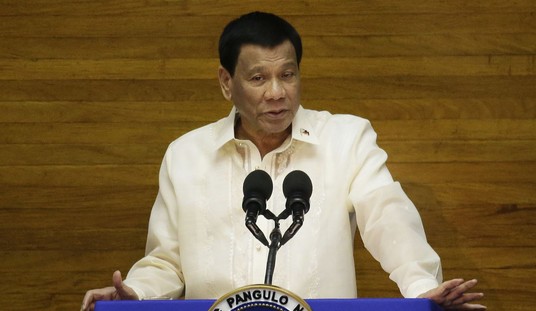I want to flag this now in case you missed it yesterday just so that we’re all on the same page when, not if, an “incident” occurs in the not-distant future.
Yesterday Obama sent B-52s, today he’s sending warships to accompany the Japanese navy in making its own approach. “Message (to America’s Asian allies): I care.”
An American carrier battle group and a flotilla of Japanese warships will arrive Wednesday near a vast stretch of ocean claimed by China in what is shaping up as a test of how Prime Minister Shinzo Abe and the USA will stand up to the challenge…
China has been laying claim to nearly 1 million square miles of ocean known as the East China Sea, insisting that the sea’s energy resources and fisheries belong to China. Much of the ocean territory it claims is hundreds of miles from its shore, including waters off the coasts of Japan, Taiwan and South Korea.
On Saturday China went further than ever, announcing it had designated much of the sea as an air defense zone it controls. The zone includes the Japan-held Senkaku Islands, a string of uninhabited islets that China calls the Diaoyus. The Chinese Defense Ministry said the zone was created to “guard against potential air threats.”
For a little background on the Senkaku/Diaoyu dispute, read Jazz’s post from this past weekend or mine from September 2012, the last time Japan and China flirted with war over the islands. The U.S. is caught in the middle, not only in having to balance its alliance with Japan against peaceful relations with China but in terms of its legal commitments to both sides. (Like I say, read the old post.) After declaring its new ADIZ on Saturday, China announced that it wanted all aircraft traveling through the zone to report their flight plans to, and maintain radio contact with, Chinese authorities. That was, of course, a power play, meant to test Abe and Obama by summarily essentially declaring the islands Chinese territory for air-travel purposes. Result: Bluff called. Two U.S. B-52s sailed straight through yesterday in direct defiance of China’s new rules:
Experts in Beijing expressed concern about a further escalation of tension and said military conflict was possible…
“It’s a clear provocation,” said Sun Zhe, director of the Center for U.S.-China Relations at Tsinghua University in Beijing. The possibility of China challenging the U.S. air defense zone could not be ruled out in the future, he said…
“The Chinese aren’t going to back off. We’re not going to back off,” said Patrick Cronin, an Asia analyst at the Center for a New American Security, a Washington think tank that consults closely with the Obama administration. “So right now, the trajectory is that there’s going to be some kind of mishap in the next couple of years.”
China said it monitored the flights but otherwise didn’t act, claiming, “We will in accordance with different situations take corresponding reactions.” One expert on Chinese foreign relations told the Journal he expects the next step will be for Chinese jets to “escort” planes inside the ADIZ, but whether they have the capability to police the zone on a continuing basis is unclear. Obama’s plan right now, it seems, is to impress regional allies with these shows of defiance on the one hand while working the diplomatic track (with, er, Joe Biden) to calm things down on the other. There may also be a concession to China in the works: It sounds from this Reuters story like the White House won’t put up a fuss if U.S. commercial airliners start complying with China’s ADIZ rules.
“We’re attempting to determine whether the new rules apply to civil aviation and commercial air flight,” State Department spokeswoman Jen Psaki told a daily briefing.
“In the meantime U.S. air carriers are being advised to take all steps they consider necessary to operate safely in the East China Sea,” she said, adding: “obviously the safety of airplanes is key … and we’re looking into what this means.”
Asked whether U.S. carriers would advise Chinese officials of their flight plans, Psaki said: “I wouldn’t go that far, we’re still looking at it.”
Is that the compromise — defiance by the USAF to reassure Japan, South Korea, Australia, and the Philippines and deference by commercial carriers to flatter Chinese prestige? This is why I’m putting this on your radar now: There’s lots more to come over the next few weeks, months, and years as America’s regional sphere of influence bumps up against China’s growing sphere of influence and unhappy surprises result. For now, though, it’s enough to say that timing is … interesting. First Obama backs down on his red line for Syria, then he sends Kerry into intense negotiations with Iran over its nuclear program; all the while, he’s busy bargaining with Karzai over some form of U.S. disengagement from Afghanistan. Maybe China thought this was some sort of comprehensive strategy for O’s second term — gradual de-escalation across the board, even if it means abandoning longstanding U.S. allies like Israel, Saudi Arabia, and … Japan? Not so, as it turns out. Obama’s chilly towards further U.S. muscle-flexing in the Middle East but the Far East, where the economic stakes and the threat posed to the U.S. potentially are even higher, is a different matter. Their move now. Stay tuned.







Join the conversation as a VIP Member